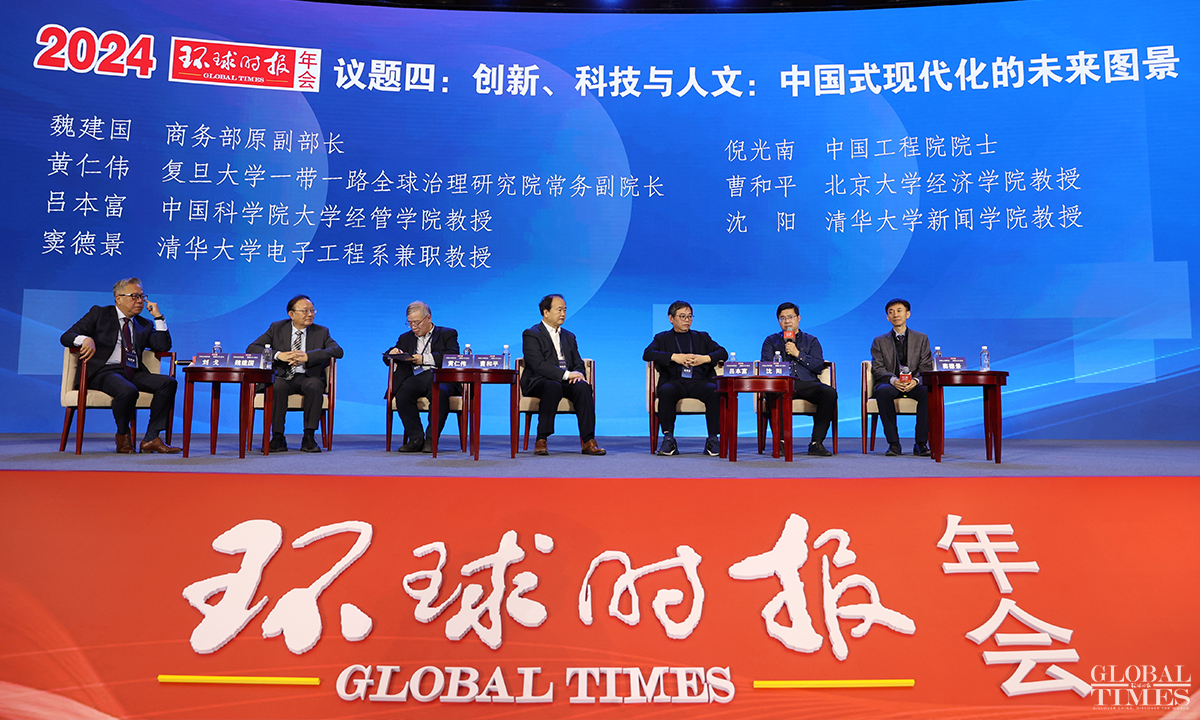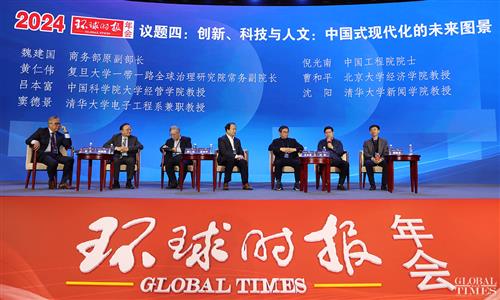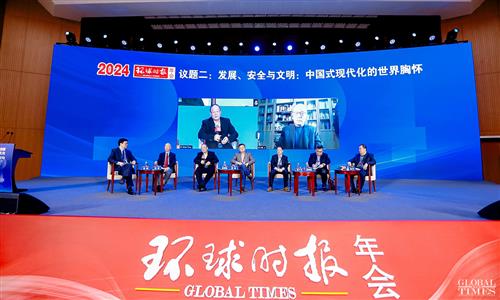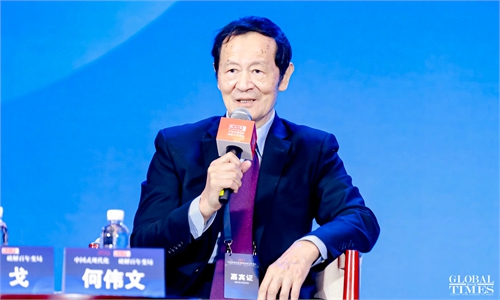
The 2024 Global Times Annual Conference is held on December 23, 2023 in Beijing. Photo: Cui Meng/GT
China's top domestic artificial intelligence (AI) large models have reached the level of GPT-3.5, and the technical gap with GPT-4 (one of the most advanced AI models today) is narrowing, Dou Dejing, adjunct professor at Tsinghua University's Electronic Engineering Department, said on Saturday at the 2024 Global Times Annual Conference.
Dou has been engaged in AI research for more than 20 years. He explained that the term "AI" was born in 1956. In the past, the sci-tech industry hoped to achieve general AI within 100 years, and the emergence of generative AI and large models greatly accelerated the process.
At present, the world is expected to achieve the goal of realizing general AI within five to 10 years. Future AI will be able to reach a higher level, Dou said.
The professor is also the Chief Data Scientist, Partner and Vice President of BCG X, the tech build and design unit under Boston Consulting Group (BCG). Dou used to work as head of Big Data Lab and Business Intelligence Lab with Baidu Research, according to his LinkedIn profile.
He admitted that the US is currently the global leader in AI. But experts at the annual conference also said that China has advantages in the sci-tech sector and is catching up with the US.
According to media reports, China currently has more than 130 large language models (LLMs), accounting for 40 percent of the global total, behind the US' 50 percent of global total.
Shen Yang, a professor at Tsinghua University's School of Journalism and Communication, said on Saturday at the 2024 Global Times Annual Conference that AI models basically iterate every six months to one year.
"From this perspective, the AI game between China and the US is long-term," Shen said, calling on China's sci-tech sector to focus on the real world needs of Chinese people.
"Only by returning to real life will our technology and innovation have greater possibilities," Shen noted.
Dou also said that the level of sci-tech innovation should be viewed from both aspects of science and technology. China currently has shortcomings in science, such as the shortage of top journals and top conferences. But in terms of the number of papers published, China is catching up and ranks second globally.
In terms of technology, China's innovation performance has been strong. Technology related to people's lives has even outshone that of the US. It can be said that China has realized the modernization of science and technology, Dou said.



